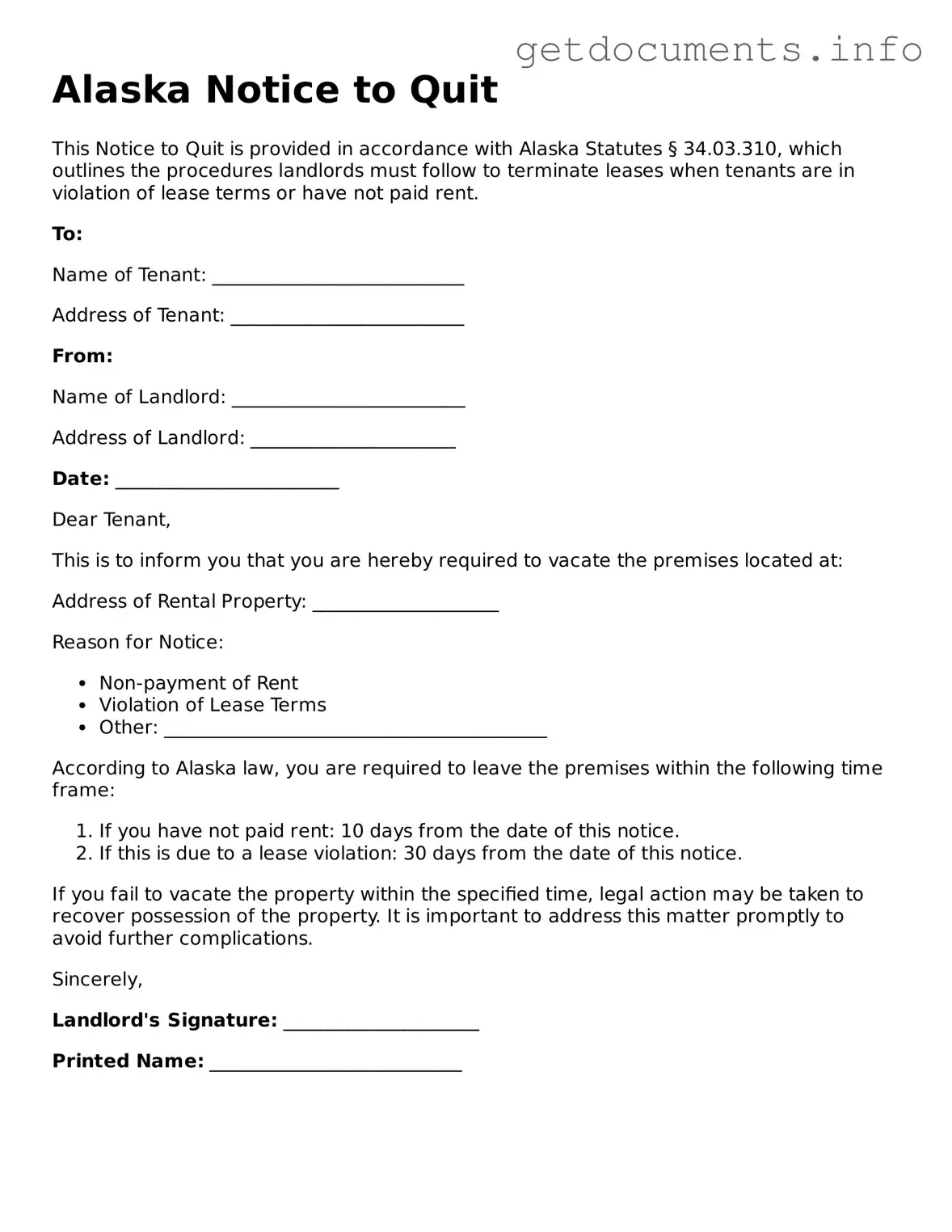Free Notice to Quit Template for Alaska
The Alaska Notice to Quit form is a legal document that a landlord uses to inform a tenant that they must vacate the rental property. This notice typically outlines the reasons for termination of the lease and provides a specified timeframe for the tenant to leave. Understanding this form is crucial for both landlords and tenants to ensure compliance with state laws.
Ready to fill out the Alaska Notice to Quit form? Click the button below to get started!
Access Notice to Quit Editor
